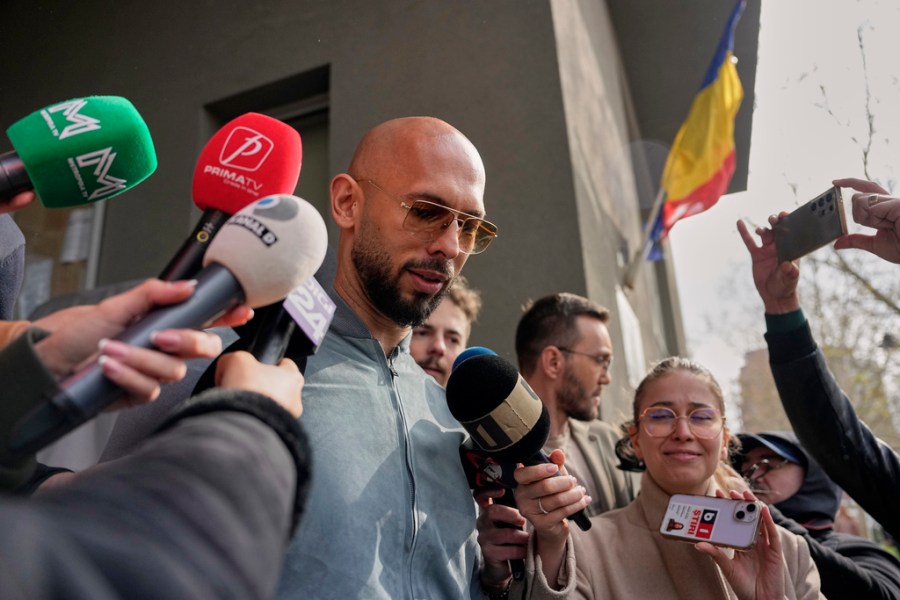
I am not here to defend Andrew Tate. Rather, I’m here to acknowledge reality. So please don’t confuse one with the other.
Tate is not the architect of the crisis facing young men today — he is a symptom of it. The New York Times, predictably, would have you believe otherwise. The same goes for The Guardian. In recent weeks, mainstream media outlets have been using Netflix’s “Adolescence” as a launching pad for a new war on masculinity.
They frame Tate as a uniquely dangerous influence, radicalizing boys into violent misogynists. The truth is more complicated and many times more damning. The education system, mainstream culture and social institutions have been failing boys for years, and this started long before Tate became a household name. But this acknowledgment requires a lot of self-examination. It is much easier to blame a single controversial figure than it is to admit that our entire society is broken.
Schools, particularly in Western countries, have become increasingly hostile to traditional expressions of masculinity. Boys are expected to behave like girls — to sit still, be passive and suppress their natural instincts.
The education system is tailored to female learning styles, with an emphasis on verbal skills over hands-on learning, group discussion over competition, and compliance over independence. If a boy struggles in this environment, he isn’t given alternative avenues to succeed. Instead, he tends to be medicated, disciplined or labeled as having a behavioral disorder.
For those rolling their eyes in dismay, this isn’t some fringe, “anti-woke” theory. In both the United Kingdom and the U.S., boys are falling behind academically at every level. They are more likely to drop out, significantly less likely to pursue higher education and increasingly disengaged from school altogether.
In the U.S., boys are more likely to be diagnosed with attention-deficit hyperactivity disorder, more likely to be suspended and more likely to be placed in special education programs. These aren’t insignificant trends. They point to an education system that no longer knows how to teach boys, let alone inspire them.
The demonization of masculinity — the branding of it as toxic and something to be targeted and essentially eradicated — was happening long before Tate donned a pair of designer shades and amassed an army of devoted disciples. By the late 1990s and early 2000s, the cultural perception of men had already begun its decline. The entertainment industry, still decades away from its “Me Too” reckoning, played a crucial role, regularly portraying fathers and husbands as feckless buffoons incapable of handling even basic responsibilities.
If you are at all in doubt, just look at the dominant male characters in mainstream television over the past two decades: Peter Griffin (“Family Guy”), Homer Simpson (“The Simpsons”), Phil Dunphy (“Modern Family”). The pattern is the same — childish and constantly outwitted by their wives and even their children. These men are not leaders or protectors. They are, at best, comic relief, mercilessly mocked for their incompetence.
Even when men were depicted as successful, they were emotionally stunted or oblivious — little better than a source of exasperation for the strong, independent women around them. And this is as true in today’s entertainment as it was more than ten years ago.
No one is safe from the madness, not even once-revered masculine heroes, such as Thor. One of the most traditionally masculine characters in comic book history had become a punchline by the time “Thor: Love and Thunder” (2022) was released. He was depicted as a brainless, bumbling buffoon, whereas the female characters surrounding him were afforded more power, intelligence and dignity.
Compare this to the 1980s and early 1990s, when action stars such as Arnold Schwarzenegger, Sylvester Stallone and Bruce Willis played men who embodied strength, resilience and responsibility. Those characters weren’t perfect, but they were aspirational.
Of course, universities have also played a significant role in perpetuating the “men are nasty” narrative. By the late 2010s, the term “toxic masculinity” had entered mainstream discourse, spreading from feminist theory into university curricula. It wasn’t long before it filtered down into corporate training programs and media narratives.
In this framing, masculinity was no longer a trait but a social ill. Any traditionally masculine behavior — assertiveness, competitiveness, even stoicism — suddenly became suspect. Boys were taught to suppress these instincts — to be softer, more agreeable, more deferential. Schools began medicating “problematic” boys at skyrocketing rates. Boys growing up in this era internalized the message that masculinity is dangerous, power is abuse, and ambition is oppression.
The result was as predictable as it was poisonous. Today, an increasing number of young men are disengaged, depressed, and isolated — hesitant to assert themselves, and fearful that any confidence or leadership they display may be perceived as aggression.
So, I ask, when young men find themselves disillusioned, ignored and cast aside, should it really be a shock that they turn to shady alternative figures online? When institutions tell them their natural instincts are dangerous, when pop culture ridicules them, when academia treats them as defective, when corporations pander to every grievance but theirs, where do they go?
Tate didn’t create this crisis — he simply stepped into the void. He presented himself as the antidote to a system that had spent decades convincing young men that they were the problem.
Masculinity isn’t toxic. It isn’t something to be eradicated or treated like a disease. It is, and always has been, an essential part of human nature, of civilization itself. The real danger, I argue unequivocally and unapologetically, isn’t masculinity. It is what occurs when you convince an entire generation of boys that being male is something to be ashamed of.
John Mac Ghlionn is a writer and researcher who explores culture, society and the impact of technology on daily life.










